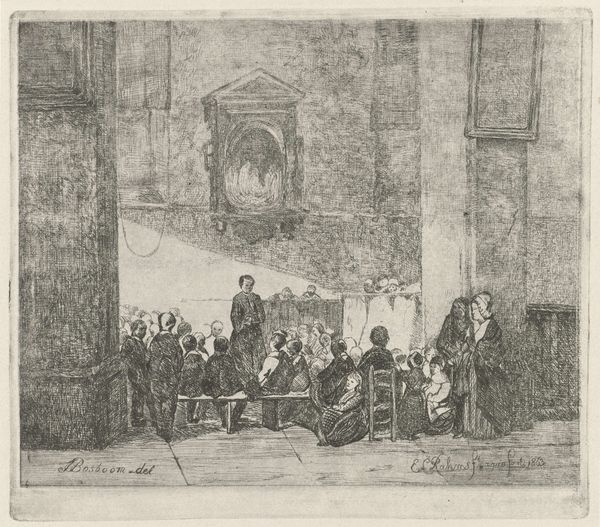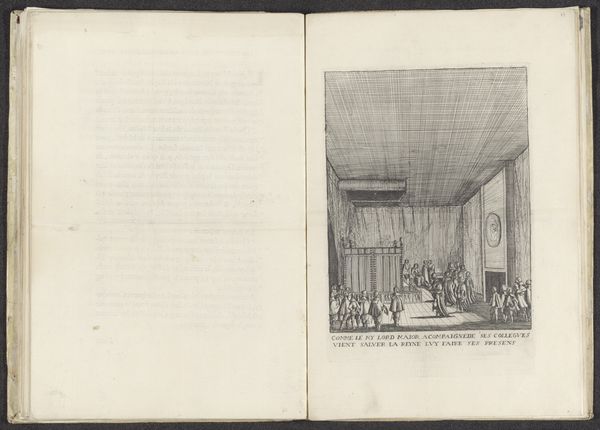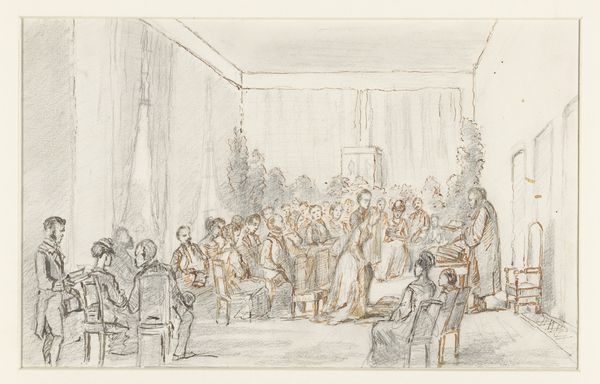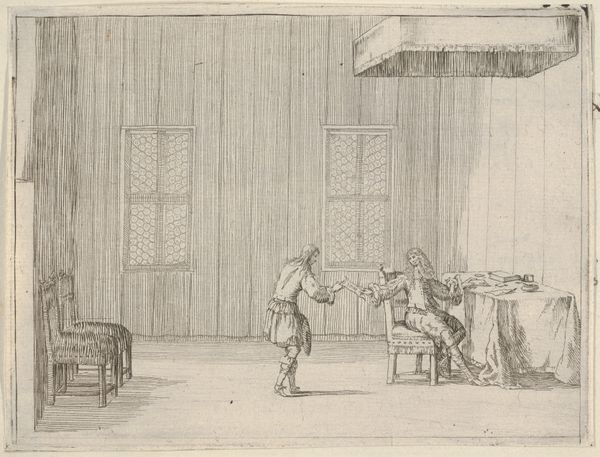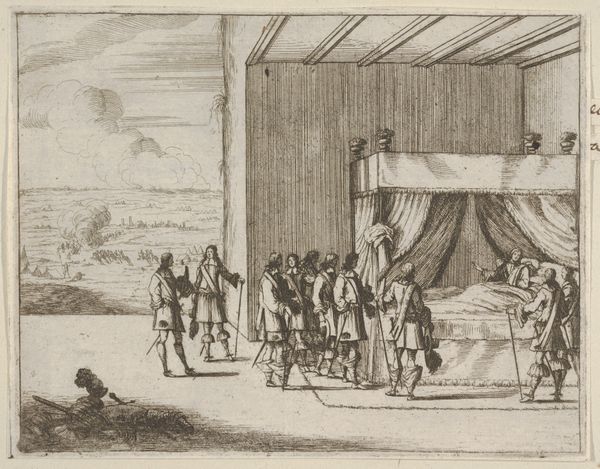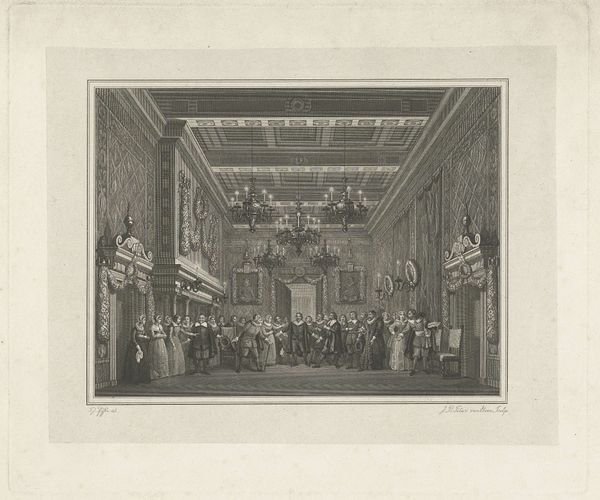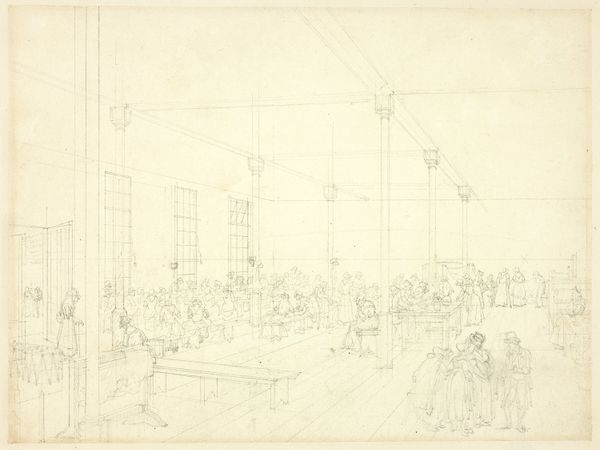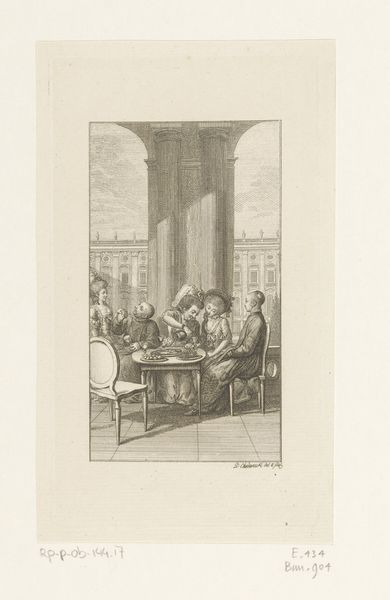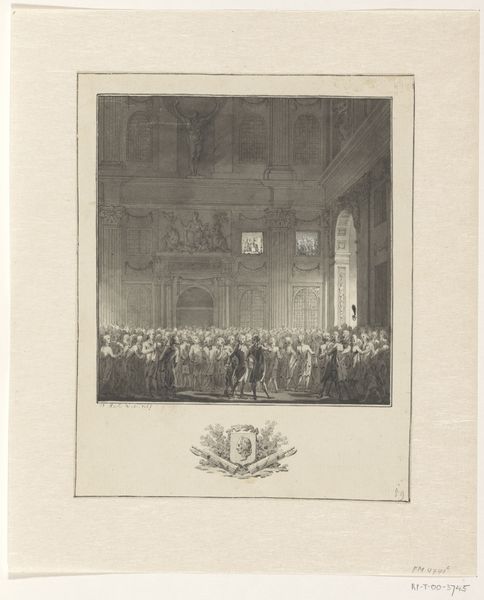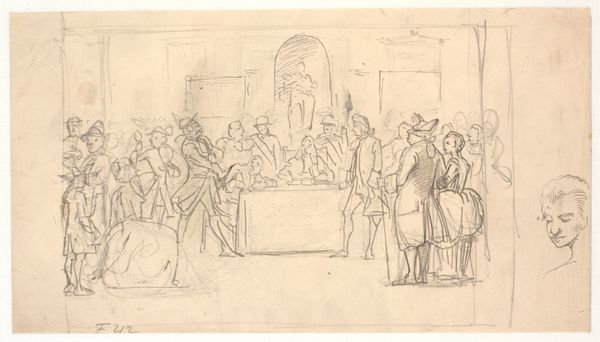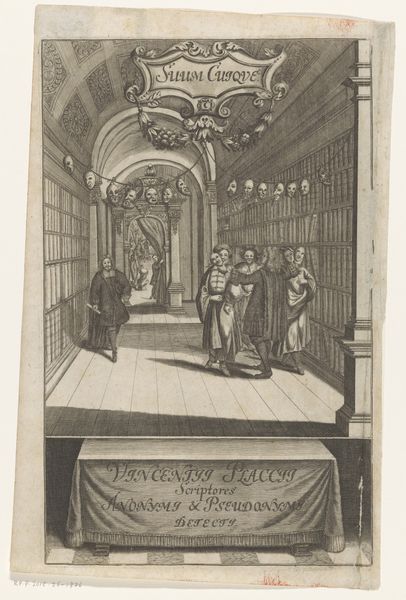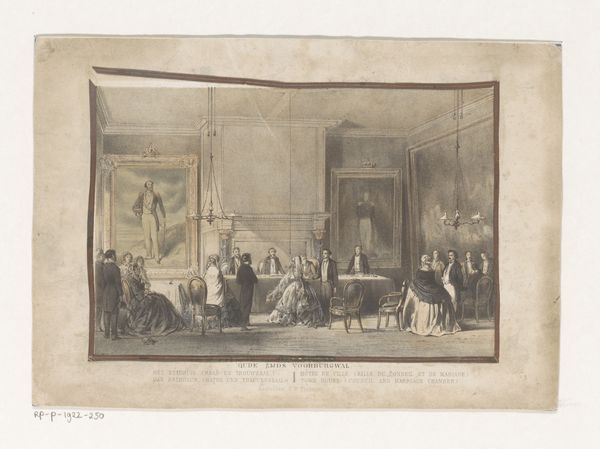![Francesco I d'Este, with his Gentle Manner, is Loved by All of the Noblemen in his Court, from L'Idea di un Principe ed Eroe Cristiano in Francesco I d'Este, di Modena e Reggio Duca VIII [...] by Bartolomeo Fenice (Fénis)](/_next/image?url=https%3A%2F%2Fd2w8kbdekdi1gv.cloudfront.net%2FeyJidWNrZXQiOiAiYXJ0ZXJhLWltYWdlcy1idWNrZXQiLCAia2V5IjogImFydHdvcmtzLzAzYTc3N2ZkLWE2NDYtNGUxNy04MTA1LTE4MDdjNzhhN2Q1ZC8wM2E3NzdmZC1hNjQ2LTRlMTctODEwNS0xODA3Yzc4YTdkNWRfZnVsbC5qcGciLCAiZWRpdHMiOiB7InJlc2l6ZSI6IHsid2lkdGgiOiAxOTIwLCAiaGVpZ2h0IjogMTkyMCwgImZpdCI6ICJpbnNpZGUifX19&w=3840&q=75)
Francesco I d'Este, with his Gentle Manner, is Loved by All of the Noblemen in his Court, from L'Idea di un Principe ed Eroe Cristiano in Francesco I d'Este, di Modena e Reggio Duca VIII [...] 1659
0:00
0:00
drawing, print, engraving
#
drawing
#
baroque
# print
#
group-portraits
#
history-painting
#
engraving
Dimensions: Sheet: 4 13/16 × 6 1/4 in. (12.2 × 15.8 cm)
Copyright: Public Domain
Curator: Looking at this engraving by Bartolomeo Fenice, dating back to 1659, I’m immediately struck by its quiet atmosphere, considering the grand subject matter implied in the title: Francesco I d'Este, with his Gentle Manner, is Loved by All of the Noblemen in his Court. Editor: It's got a distinctly performative air about it, doesn't it? The architecture feels almost like a stage set, all very controlled and deliberate. Even the way the light falls...everything feels managed, as if to convey specific meaning, although very little emotional texture gets through, really. Curator: Precisely. Fenice was part of a tradition deeply embedded in the political structures of his time. The printmaking process itself allowed for wide distribution of these idealized images of power, fostering specific desired representations of leadership. Engravings like this reinforced the Duke’s authority, circulating ideas of courtly grace, which could be copied, reinterpreted, and emulated, furthering a kind of Baroque brand. Editor: I suppose there's a sort of cold elegance to it, now that you mention it, but personally I can’t help but see it also as rather sad—these nobles, all essentially acting, posing, in service to a fabricated image, you almost feel like something about who the artist may be poking at, by how staged things look. Curator: But remember the conditions under which it was created, in times of continuous strife and shifts in European dominion and resources. An image promoting internal concord and an image of grace projected strength, just as an artist, Fenice had to survive too by the graces of noble employment. It’s not just aesthetics, but function! We also see an incredibly controlled application of hatching, a meticulous hand working, essentially creating tone through repetitive mark making... Editor: Yes, almost obsessively rendered. What a life; working always to make those in charge look nice! Curator: It invites one to consider the conditions of artistic creation itself, the layers of labor, social expectations, and perhaps also quiet defiance. Editor: Indeed, now when I look, I consider it something beyond representation alone. Thank you, that helped re-shape my perspective.
Comments
No comments
Be the first to comment and join the conversation on the ultimate creative platform.

